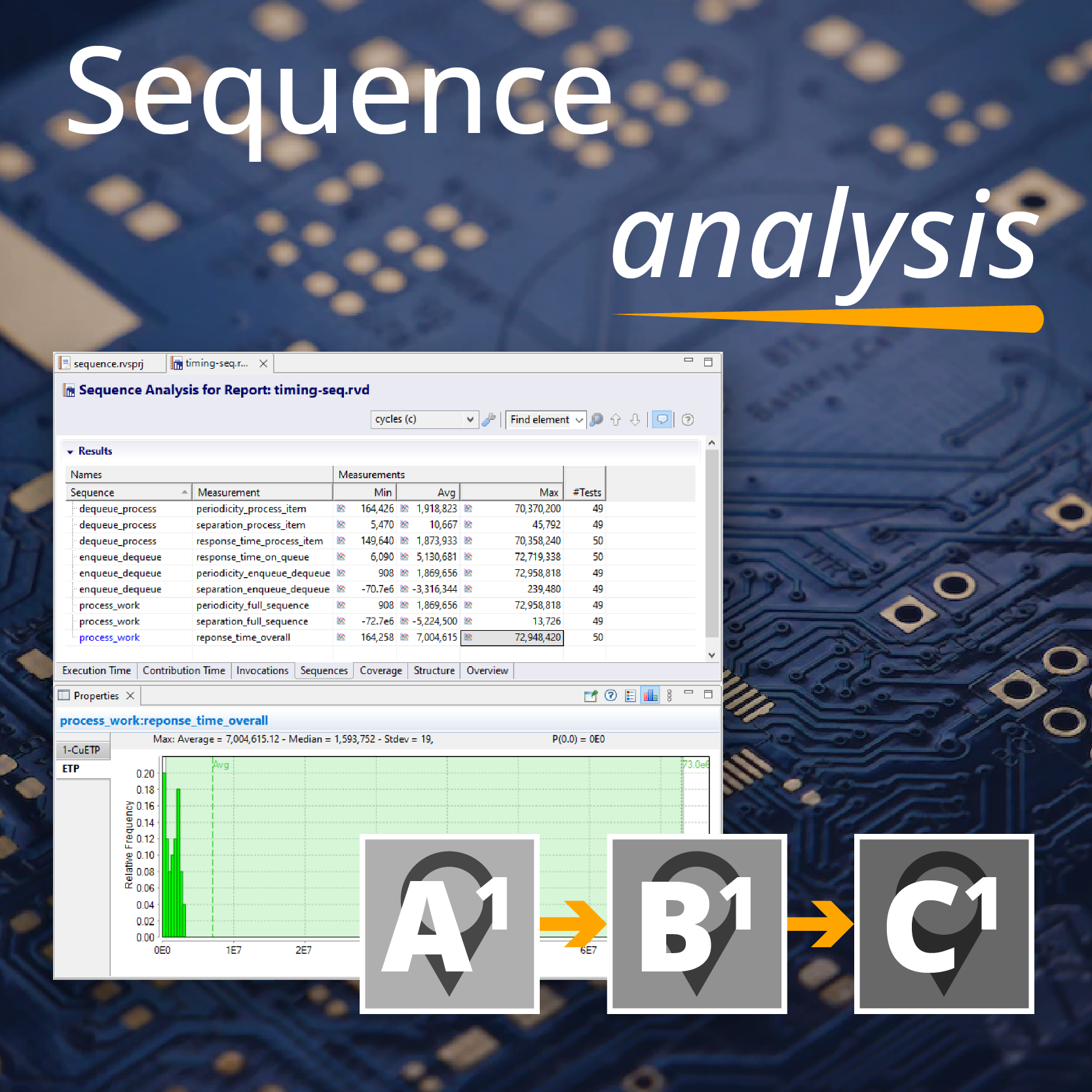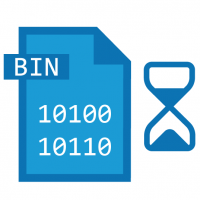If you've measured execution time, eliminating the context switches and the variability they cause (see our last blog post), you may still have a wide variety of execution times that arise from the thread you're measuring. A natural question is why this should happen. To be able to answer such questions, you need to have the right level of information.
Some embedded development products, such as integrated development environments (IDEs) or debuggers feature simple performance measurement tools that measure minimum, maximum and average execution times.
A more informative approach is to collect execution time profiles (ETPs), which shows the actual distribution of execution times.
Execution Time Profile (ETP)
 If the ETP shown was measured with a typical profiler that gives only minimum, maximum and average times, it would give the following results:
If the ETP shown was measured with a typical profiler that gives only minimum, maximum and average times, it would give the following results:
Minimum: 28,000 cycles
Maximum: 86,000 cycles
Average: 38,000 cycles
With only this information, it could lead to several incorrect assumptions about the timing of the software. It is considerably more informative to see the entire distribution, which can lead to a much greater understanding of the underlying behaviour of the system.
It is also helpful to be able to relate execution time measurements to specific test cases.
Execution time to test case mapping
 With this kind of information, if a specific test case has an unexpected impact, it can be identified and it can be repeated. Unusual timings can be related back to specific test cases to identify their cause.
With this kind of information, if a specific test case has an unexpected impact, it can be identified and it can be repeated. Unusual timings can be related back to specific test cases to identify their cause.
Next week: Minimize instrumentation overheads

 Rapita System Announces New Distribution Partnership with COONTEC
Rapita System Announces New Distribution Partnership with COONTEC
 Rapita partners with Asterios Technologies to deliver solutions in multicore certification
Rapita partners with Asterios Technologies to deliver solutions in multicore certification
 SAIF Autonomy to use RVS to verify their groundbreaking AI platform
SAIF Autonomy to use RVS to verify their groundbreaking AI platform
 RVS gets a new timing analysis engine
RVS gets a new timing analysis engine
 How to measure stack usage through stack painting with RapiTest
How to measure stack usage through stack painting with RapiTest
 What does AMACC Rev B mean for multicore certification?
What does AMACC Rev B mean for multicore certification?
 How emulation can reduce avionics verification costs: Sim68020
How emulation can reduce avionics verification costs: Sim68020
 How to achieve multicore DO-178C certification with Rapita Systems
How to achieve multicore DO-178C certification with Rapita Systems
 How to achieve DO-178C certification with Rapita Systems
How to achieve DO-178C certification with Rapita Systems
 Certifying Unmanned Aircraft Systems
Certifying Unmanned Aircraft Systems
 DO-278A Guidance: Introduction to RTCA DO-278 approval
DO-278A Guidance: Introduction to RTCA DO-278 approval
 Avionics Certification Q&A: CERT TALK (with Consunova and Visure)
Avionics Certification Q&A: CERT TALK (with Consunova and Visure)



















